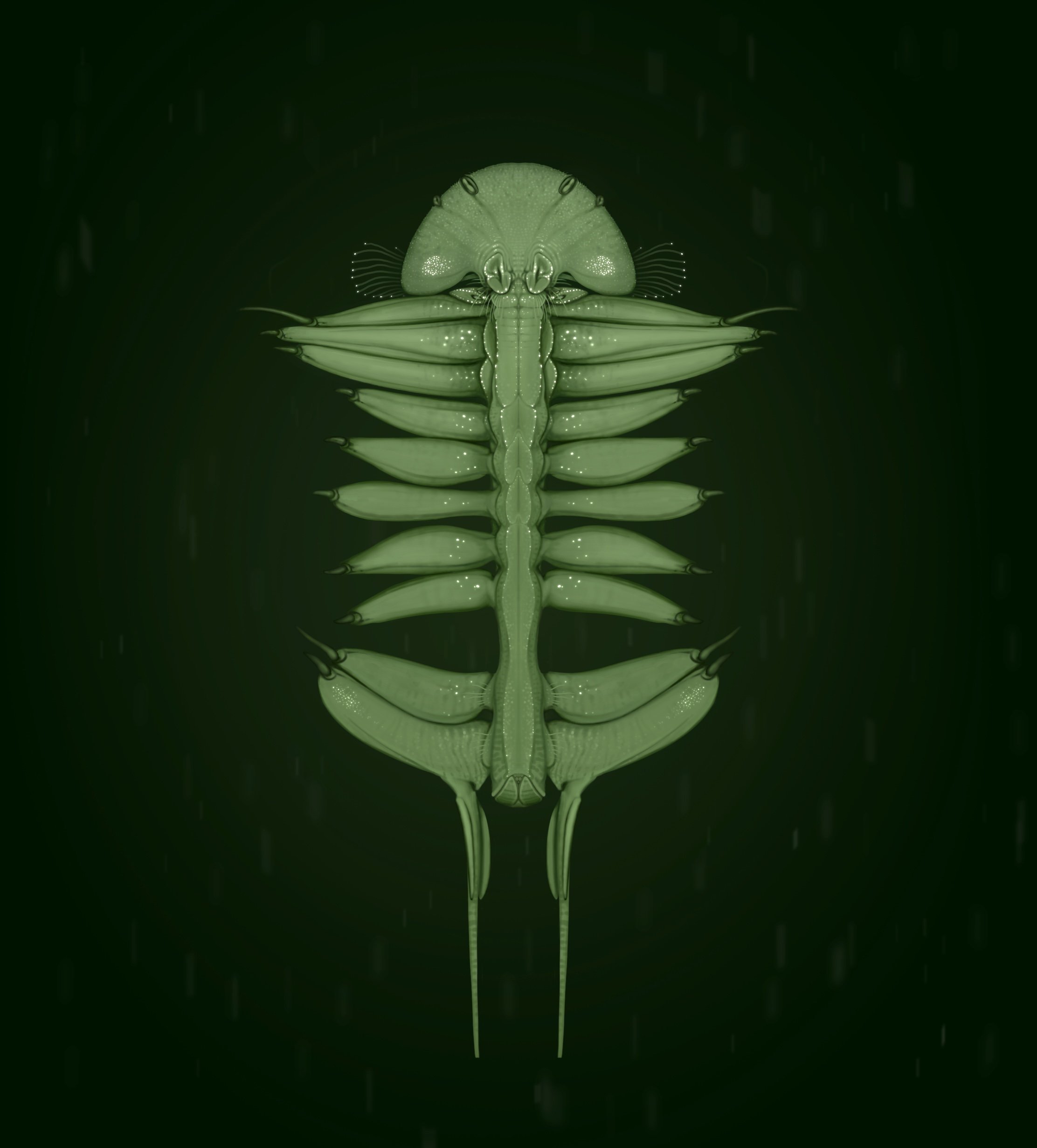Spore Forests
This biome consists of sylvan environments hidden beneath the growth of massive fungal super-organisms. Below the organic ceiling of the forest, all manner of life grows and thrives in a constant cycle of decay and rejuvenation. Spore forests are some of the most sheltered environments on Isla. Very little of the winds characteristic to the planet penetrate the canopy, and as a result the reduced airflow floats decaying matter and aeroplankton through the air. This organic matter sustains the growth of larger organisms that inhabit the gloomy environment. Due to a lack of light, many of the organisms of the deep forest adopt bioluminescent displays to communicate, defend themselves, and attract prey.
Spore Forest Cross-section
Structures of the Superorganism
The organism beneath which a spore forest is formed is eusocial, and the many structures one may find under the forest ceiling all play unique roles in the growth of the organism. Some take on reproductive roles, while others help to expand the reaches of the forest, harvest light from Isla’s star, or even protect from mycophagic organisms. Pictured here are the most common structures found underneath all spore forests.

Spore Forests are formed in and around the growth of a fungal superorganism known as Sorudastrati platiphora. While all kinds of life can found hidden underneath the canopy, the outer surface of the forest ceiling is an ecosystem within itself. Atop the growth of the superorganism, streamlined creatures traverse the spongy tissue, and some photosynthetic plants grow within the canopy itself.
Above the Spore Forest
Fungal Sapling
Within scattered patches of light new growth of Sorudastrati platiphora quickly emerges. Fungal saplings appear in the wake of a ceiling collapse, and rapidly grow to fill the gap in the canopy above. These saplings fiercely compete with one another to reach the surface, and generally only the fastest growing, most optimally located individual will get the chance to mature and join with the other trunks around it.
Fungal Chandelier
Hunter of the Forest Heart
Beneath the Fungal Ceiling
Bioluminescence
Organically produced light is common in certain areas, particularly those like the heart of the forest which see fewer breaches in the fungal ceiling and thus less outside light exposure. Microscopic and macroscopic organisms alike sport glowing displays which can serve a wide range of purposes. Flora use lights to facilitate pollination, with some growing from the forest ceiling, and others send flowers deep into subterranean caves. Many aerial species use self-produced light for communication, and other more cryptic organisms may emit sudden flashes of bioluminescence to scare away potential predators.
Pteraplica velox From Above
Sea of Lights
Warning Flash










